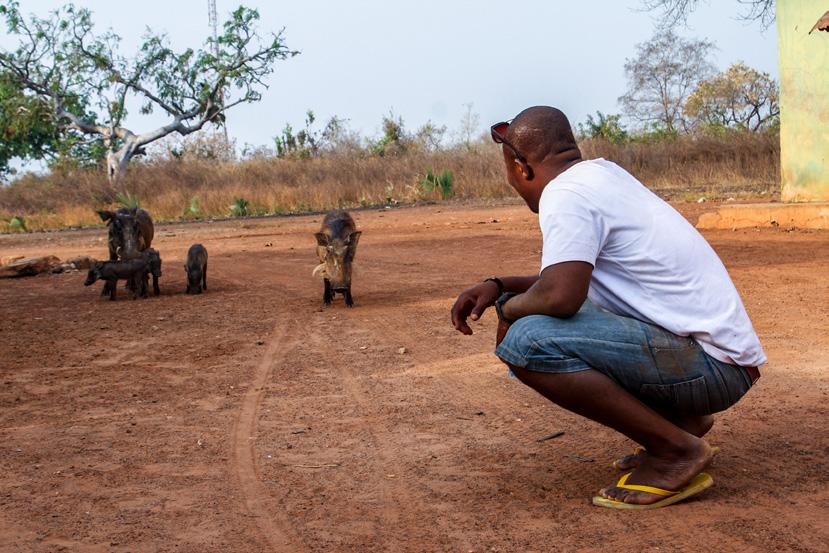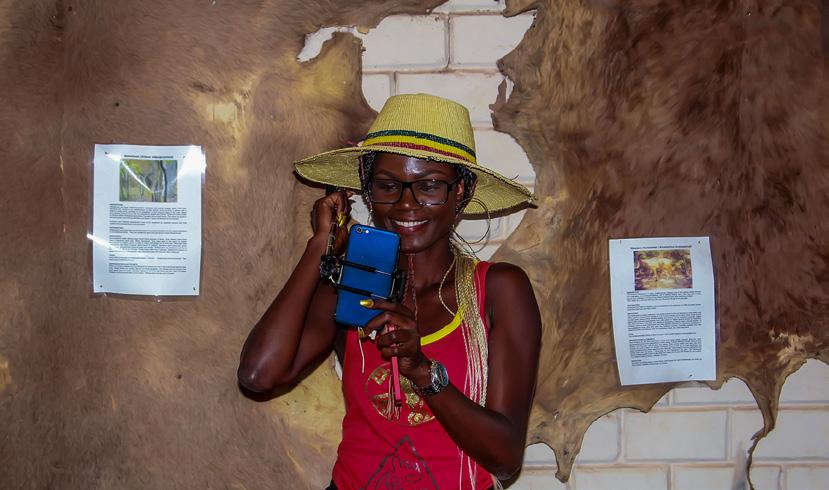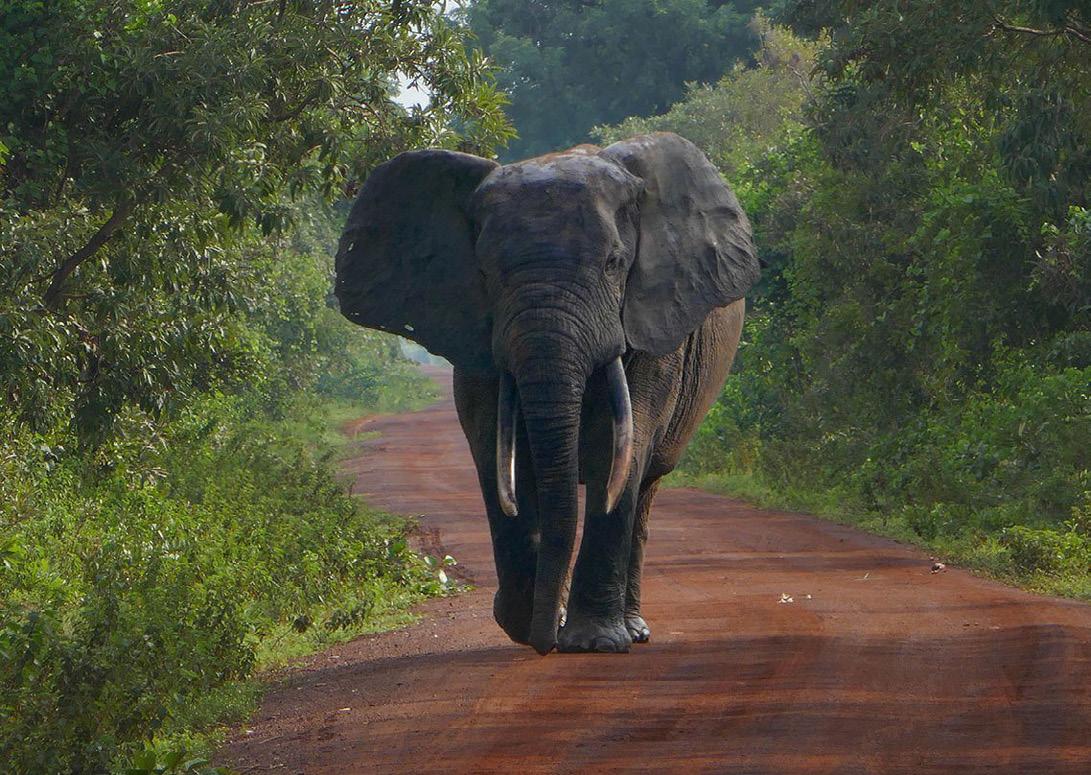
4 minute read
Off the beaten track in Ghana’s Mole Game Reserve
Africa and Safari go hand-in-hand as this entire continent is a dream for nature and wildlife fanatics from across the globe. Every safari destination has its own special virtues, and in Ghana’s Northern region, Mole National Park is best known for the quality of its accommodation, peaceful and carefully managed private reserves, and its diversity of landscapes and ecosystems.
By Selorm Sosu
Mole National Park is a wilderness seemingly untouched by civilization. Although difficult to reach, it carries a charm and beauty which is deemed infectious by those who dare venture out for some exploration across Ghana’s remarkably diverse settings, both in complexity and composition. With mysterious beauties unfolding across the span of the country, Mole is one such place.
What makes Mole so special
Mole stands out bold and truly is an awesome place in which nature’s architectures is displayed. Revealing stunning panoramic views, and perched high up on a ridge, overlooking the surrounding wooded savannah, it appears as a carved piece of the landscape, jutting out of the hillside, with the ridge extending in a crescent from southeast to the southwest. It is a spectacular view to behold, and boasts an activity-filled waterhole down below, where crocodiles cruise, antelopes graze, elephants bath and monkeys play. It’s a unique and isolated landscape where a myriad of unique creatures roam about and where in times past, has been considered a haven for hunters.
The watering holes capture precious rains, and also receives water trickling from nearby streams, making the general landscape quite replete with water. Mole Game Reserve is not unusual with the abundance in fauna it possesses, but it has been known to carry a sense of peculiarity and reminiscence of bygone days’ untainted by the effect of commerce. Birdlife is also powerfully present as graceful aerobatic golden orioles’ flute penetrate one’s dream at dawn. Down in the plains are a variety of king fisher’s preying in silence; while flocks of bee-eaters dig nests in the banks bulldozed by elephants.
The Elephants of Mole
You’ll find an abundance of these gentle giants in Mole; and there are two types of elephants at Mole; the savannah and the forest type. Savannah elephants are deep grey in colour and found as you may have guessed it, in the savannah areas of Ghana. One can watch elephants for hours at a time; yet sooner or later, it’s common for their behaviours to shift so abruptly, such as mowing the grass with its toenail or drawing their the tusks from the rotted carcass of another elephant, carrying them off into the bush. With a life span that ranges between 55years to 70years, their gestation period sits at 22 months! This is a long time by any stretch, and so no wonder the death of any elephant is indeed a tremendous loss to the animal kingdom.

Wildlife encounters in the throngs of Mole
A short safari trip in a 4×4 vehicle can take you, in the morning, into the Savannah to view the endangered Western Kobe, the beautifully painted bush pig. The Kobe herds are easily seen because of their apparent disregard for motorized vehicles as they descend upon you, fearless of their surrounding plains and eager to spend the night on the rage in small herds, easily a few hundred yards from your room. Antelope are seen afar foraging in the bush for what to eat and also a safe place to rest. Many species of the duiker, the smallest of antelopes which come no larger than a dog, are usually seen diving for cover, while the timid white –thighed colobus monkeys, quickly disappear at the slightest scent of human approach for fear of poachers.
A long haul drive can take you deeper into the reserve, an excellent trip for the spirited adventurer. You’ll find a number of camps within the reserve, and for the visitors booked for overnight stays, there are caves which abound in the ridge to the north
Keen on visiting Mole? Contact detravelingfotografa@gmail.com or WhatsApp number +233244411375 to learn more about how you too can discover the off the beaten track Mole Game Reserve of the park, however these are only accessible in the dry season.
It’s an amazing experience to also explore Mole on foot, but it is recommended that one does so in full-length clothing, preferably jeans or thick pants, a good pair of boots, and two-litres of water for hydration, with a guide to leads you down into the plain. Dawn is most comfortable to venture out for most in the cool of a walking breeze, however the evening may yield more wildlife encounters.
Also in the view from the ridge, a kilometre to the south are the watering holes, where you sometimes encounter bathing elephants. It’s also fascinating to see the giant monitor lizards and their young often creeping within the overhanging branches, while herds of buffalo and big cats roam nearby. Visitors are discouraged from moving alone but rather in groups and under the care of a guide to avoid the heightened possibility of being attacked by the wilder groups of animals. It is for this reason that guides typically venture into the plains with a raffle in hand to protect the tourist in the event of the threat of an attack. The leopard and the lion, now practically poached to extinction, are in fact a rare find and mostly hunt by night.

Where to lay your head
A stay at Mole is undoubtedly more rustically earthy than glamourous, with dormitory-style, moderate chalets covering a few acres on the edge of the imposing ridge. Mole is a place to visit again and again, and as night falls there is little to do but just relax. In Mole, there’s no piped music, no native entertainment, and no raucous shouts, but just the absolute sound of Africa in its wildest and most natural element. Perhaps what makes it that much special is how isolated it is from the regular, more mainstream tourism destination. Yet the promise of wild adventure, the rustic charm of the accommodations and the laid back lazy way of life when there, carries with it an experience far from the madding crowd, and one you will harness memories from.










